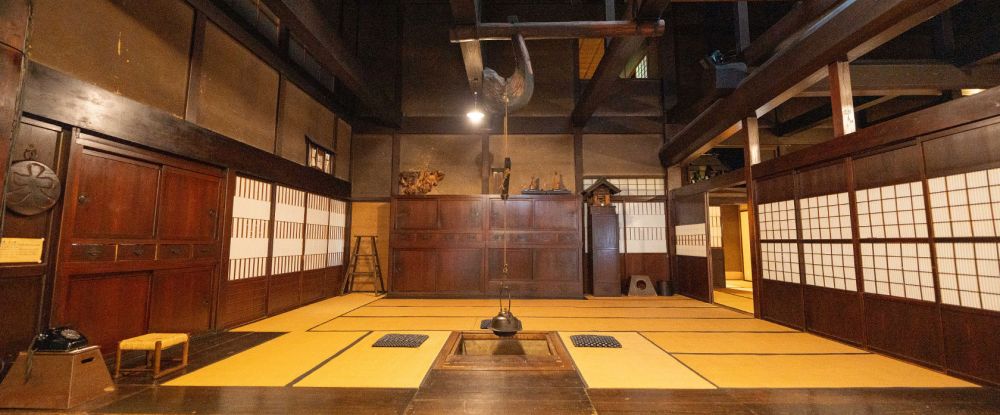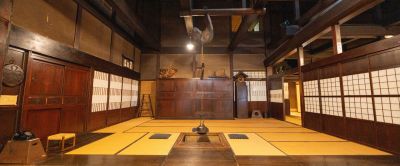

Delve into the rich history of Takayama, also known as Hida-Takayama, by embarking on a guided tour of the Kusakabe Folk Museum. This activity provides participants with a detailed narrative of the Kusakabe family's legacy and the architectural significance of the museum, a designated Important Cultural Property. Built during the Meiji era, the museum was originally a merchant's home showcasing traditional construction techniques. As guests wander through the rooms, they will observe the beautifully preserved artifacts and daily life items that reflect the lifestyle of a bygone era. The tour also highlights the distinctive features of the gassho-zukuri-style roof and the intricacies of Japanese joinery, which have withstood the tests of time without the use of nails. A well-informed guide shares insights into the cultural and social aspects of the historic Takayama region, leaving visitors with a deeper appreciation of Japan's cultural heritage.
Experience the traditional art of Japanese woodblock printing at the Kusakabe Folk Museum with an engaging workshop suitable for both adults and children. Participants gain hands-on experience by carving their own designs into soft woodblocks and then applying ink to create beautiful prints. The workshop not only teaches the technical skills involved in this age-old craft but also sheds light on its historical context within Japanese culture. Under the guidance of skilled artisans, guests learn about the ukiyo-e style and the role woodblock prints played in disseminating imagery throughout the Edo period. By the end of the session, participants walk away with their own creation, a unique souvenir that captures the essence of traditional Japanese artistry.
The traditional tea ceremony is a pivotal aspect of Japanese culture, and at the Kusakabe Folk Museum, visitors can witness a serene demonstration of this meditative practice. During this experience, a tea master leads the ceremony, showcasing the precise and graceful movements involved in preparing and serving matcha, the finely ground green tea. The demonstration takes place in a tatami-matted room, providing an authentic setting for guests to observe and partake in the ritual. The activity serves as a bridge across time, connecting participants to the values of respect, purity, tranquility, and harmony that underpin the tea ceremony. While enjoying the flavorful matcha and traditional Japanese sweets, visitors will find themselves immersed in the calming atmosphere, gaining a deeper understanding of this revered Japanese art form.
The Kusakabe Folk Museum's cultural storytelling session is a delightful journey through the myths and legends surrounding Takayama and the wider Hida region. Visitors are seated comfortably as a skilled raconteur regales them with intriguing tales that bring to life the folklore of ancient Japan. Stories revealing the origins of local customs, festivals, and historical figures captivate audiences of all ages. This activity not only entertains but also educates, providing insights into the spiritual beliefs and societal values that have shaped the local community. Through these narratives, visitors gain a greater appreciation for the region's unique identity and the role that oral traditions play in preserving cultural heritage.
The kimono dressing experience at Kusakabe Folk Museum offers visitors a rare opportunity to immerse themselves in Japanese culture through the art of kimono. Participants select from a diverse range of kimonos, learning how each pattern and fabric holds different significance related to season, occasion, and personal status. Skilled attendants guide guests through the complex process of putting on a kimono, explaining the layers and accessories involved, such as the obi (belt) and tabi (socks). This activity allows individuals not only to appreciate the beauty and intricacy of these traditional garments but also to learn about the customs and etiquette associated with kimono wear. The experience often includes a photoshoot in the museum's picturesque surroundings, creating a lasting memory of one's exploration into this elegant aspect of Japanese tradition.
At the Lantern Making Workshop in Kusakabe Folk Museum, participants engage in crafting traditional Japanese paper lanterns, known as chochin. This artistic endeavor starts with an intro to the history and significance of lanterns in Japanese culture, particularly their use in festivals and as symbols of enlightenment. With guidance from skilled artisans, visitors learn how to construct the bamboo frame and carefully apply the washi paper, which is renowned for its translucence and strength. Decorating the lanterns with calligraphy or painted designs adds a personal touch, resulting in a unique, handmade artifact that warmly illuminates any space with the soft, diffused light characteristic of chochin. This workshop not only teaches a practical skill but also provides an understanding of the aesthetics and simplicity valued in Japanese craftsmanship.
The Kusakabe Folk Museum hosts an aromatic journey through the art of Japanese incense, known as kodo, which translates to 'The Way of Fragrance.' This incense appreciation class introduces participants to the traditional Japanese incense ceremony, an experience rich in sensory delight and historical significance. The class begins with an overview of the different types of incense, their ingredients, and their origins. Attendees learn about the diverse scents derived from natural materials like agarwood and sandalwood and the role incense plays in meditation and relaxation. The highlight of the class is the interactive demonstration, where visitors have the chance to burn incense using centuries-old methods, savor its complex fragrances, and develop their olfactory senses. This tranquil and contemplative activity offers a peaceful respite and a reconnection with the natural world through the timeless ritual of incense appreciation.
The calligraphy class at the Kusakabe Folk Museum is an immersive experience into the flow of brush and ink on washi paper. This expressive art form, known as shodo, offers participants a glimpse into the discipline and creativity that underlie Japanese writing. Beginning with an introduction to the various brushes and inks used, the class progresses to the basic strokes and characters of kanji, the Chinese characters adopted in Japanese script. Expert calligraphers guide each participant, providing individual feedback and tips on technique and form. The goal of the class is not merely to replicate characters but to express one's own emotions and personality through the brushwork. As participants focus on each stroke's rhythm and pressure, they often find calligraphy to be a meditative and fulfilling art that reflects the Zen concept of mindfulness through simple actions.
The Origami Workshop at the Kusakabe Folk Museum introduces visitors to the delightful world of Japanese paper folding. Ori meaning 'folding' and kami meaning 'paper' combine to form origami, a traditional Japanese art that transforms a flat sheet of paper into a finished sculpture through folding and sculpting techniques. The workshop is suitable for all ages and skill levels, from beginners to those looking to refine their techniques. With an array of colorful papers and patterns to choose from, participants learn to make various models, such as classic cranes, intricate flowers, or festive decorations. As they fold, crease, and create, guests discover the patience, precision, and imagination that this craft requires. In the process, the workshop also imparts lessons on geometry and problem-solving, making it an educational as well as an enjoyable activity.
Sake, Japan's beloved rice wine, takes center stage in the Sake Tasting Session at the Kusakabe Folk Museum. This tasteful event introduces sake enthusiasts and novices alike to the rich variety and complex flavor profiles that characterize Japanese sake. Participants learn about the meticulous brewing process from koji-making to fermentation, which can differ greatly from region to region, resulting in a wide diversity of sake types. The session covers how to appreciate the subtleties in aroma, flavor, and texture, as well as the proper serving etiquette and food pairings. With each sip, guests gain a deeper understanding of why sake is more than just a beverage in Japan—it's an integral part of the culture, often associated with tradition, celebration, and community. The Sake Tasting Session leaves participants with a newfound appreciation for this elegant spirit and its place within Japanese gastronomy.
